Resources
For more information on food forests:
Aspinall, Brianna. Planting A Food Forest? 4 Tips from an Expert. https://parkpeople.ca/2017/08/17/planting-your-first-food-forest-four-tips-from-a-community-food-forest-expert/
Baker, Shannon et al. Food Forests: A conversation with Catherine Bukowski. https://www.oala.ca/ground_articles/food-forests/
Chung, Emily. CBC News: Why Cities are Planting more ‘Food Forests’. https://www.cbc.ca/news/science/what-on-earth-food-forests-1.5660211
Hayes, Jane. https://www.gardenjane.com/
Mackey, Taylor. An Urban Food Forest for Peterborough: Planting for our Future. https://www.greenup.on.ca/wp-content/uploads/2014/07/Urban-Food-Forest-FINAL-Report.pdf
For examples of food forests:
Cowichan Green Community. https://cowichangreencommunity.org/project/urban-food-forest/
London’s Carolinian Food Forest. https://www.facebook.com/Londons-Carolinian-Food-Forest-988261481201989/
Miracle Farms. https://miracle.farm/en/
Northern Farm Training Institute. https://nftinwt.com/
9 Steps to Creating your Own Food Forest
- Know your site! Gather all the information you can about your site: soil type, pH, hardiness zone, amount of sunlight, topography, map and dimensions of the site, climatic data incl. avg. rainfall, wind speeds and direction, orientation, micro-climates, inventory of structures and pathways etc. Don’t forget to include a water supply!
Do a Call Before You Dig before you put the shovels in the ground!
2. Consider access to the site. Can all people participate? Is the site on or near public transport? What about parking?
3. Determine a mission statement for your food forest. Why are you doing this?
4. Create a site plan. This is a drawing of what your site will look like once the project is up and running.
5. Create a crop plan spreadsheet. Include information on varieties/cultivars, number of plants, planting dates, and estimated harvest dates and yields.
Make sure what you want fits with the site conditions! Fruit trees dislike ‘wet feet’ and shade!
6. Cultural practices. Are the site conditions an attribute or constraint to the growing of plant material? What problems do you foresee? What site factors will make growing easier? Think about soil preparation, planting methods, disease and pest management, weed control, irrigation, pruning and harvesting methods. See When to Prune Fruit Trees by Orchard People for resources on pruning. For organic spray recipes click here.
7. Consider any problems that may arise. Is there a succession plan? Is there a healthy roster of volunteers? Could the land be sold or developed?
8. Create an equipment list. What will you need? What equipment do you have already?
9. Have fun and get planting!

